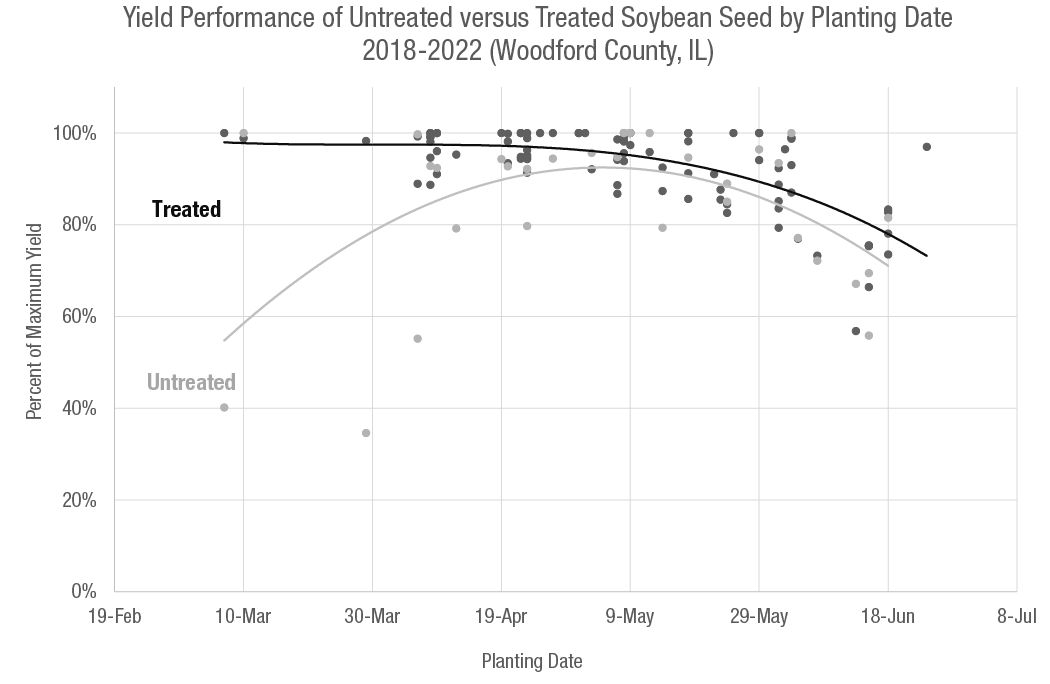The Importance of Quality Seed Treatments in a High-yield Soybean System
March 7, 2023
TRIAL OBJECTIVE
- Recent research indicates that soybean crops benefit from earlier than historically accepted planting dates.1
- Planting into cool, wet soils like those found early in the growing season increases the risk of damage from insect seed pests and soilborne pathogens.2
- This research was conducted with a goal of understanding the value of protecting an early planted soybean crop from disease and insect pests.
RESEARCH SITE DETAILS
- This research was conducted at the Bayer Crop Science FOCUS site in Woodford County, Illinois from 2018-2022.
- Soybean products ranging in maturity group (MG) from 2.7 to 3.6 were used, although different products were used in different years.
- Seed was either untreated or treated with Acceleron® Seed Solutions Standard (fungicides metalaxyl, fluxapyroxad, pyraclostrobin and the insecticide imidacloprid) and ILeVO® Seed Treatment.
- Standard fertility and weed management practices were followed, and plots were harvested as they matured.

UNDERSTANDING THE RESULTS
- In general, the yield of seed treated entries was higher with earlier plantings (Figure 1).
- The difference in yield performance between treated and untreated was greatest in early plantings; the advantage of treatments was less pronounced in later plantings (Figure 2).
The average seed treatment potential return on investment (ROI) was $75.43 across all planting dates (Figure 2) based on a treatment cost of $15 and soybean value of $16/bu.



KEY LEARNINGS
- Soybean seed treatment is especially critical in very early plantings, with observed yield differences up to 50 bu/acre between treated and untreated.
- Seed treatment has a positive ROI in Illinois until around the end of May, by which time considerable yield potential has been forfeited.
Sources:
1Nafziger, E. 2020. Planting corn and soybeans in 2020. farmdoc. Department of Crop Sciences, University of Illinois at Urbana-Champaign. https://farmdoc.illinois.edu/field-crop-production/uncategorized/planting-corn-and-soybeans-in-2020.html
2Wise, K., Bradley, C., Chilvers, M., Conley, S., Faske, T., Giesler, L., Mueller, D., Sikora, E., Smith, D. Tenuta, A., and Tilmon, K. Factors to consider before using a soybean seed treatment. CPN-4003-W. Crop Management. Crop Protection Network. A Product of Land Grant Universities. https://crop-protection-network.s3.amazonaws.com/publications/cpn-4003-crop-management-factors-to-consider-before-using-a-soybean-seed-treatment.pdf
1310_193501